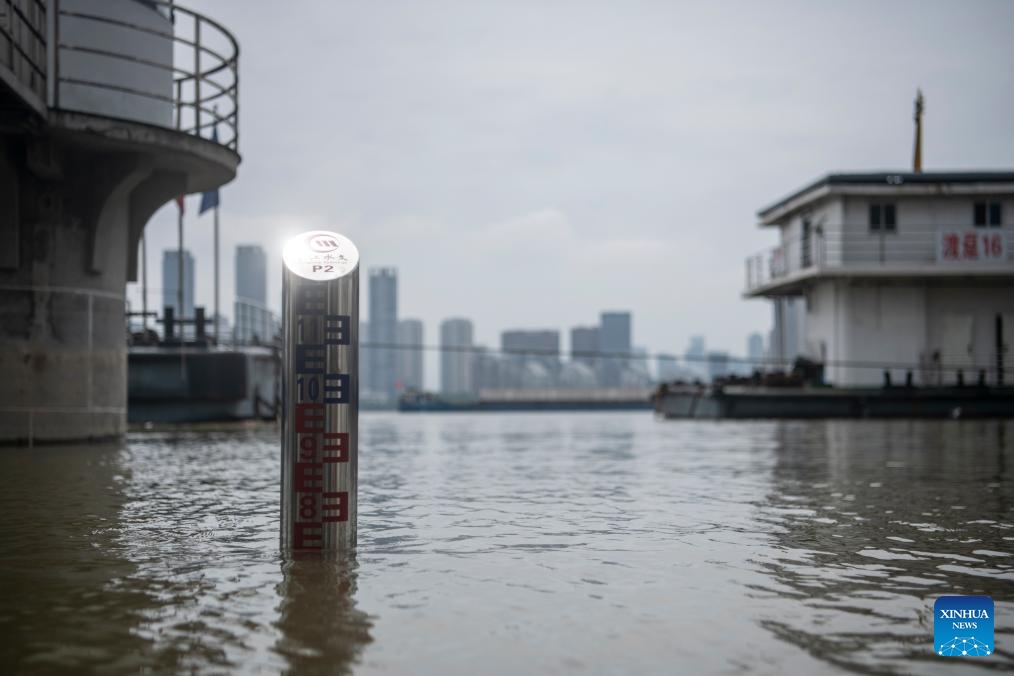
This photo taken on July 2, 2024 shows a water level gauge in the Yangtze River in Wuhan, central China's Hubei Province. Water levels in sections of the middle and lower reaches of the Yangtze River -- China's longest river -- below the estuary of Dongting Lake, have exceeded the warning mark, according to the Ministry of Water Resources Tuesday. Photo: Xinhua
The water levels in the Yangtze River maintain exceeding warning marks in middle and lower reaches as the China Meteorological Administration (CMA) forecast on Thursday a more complex flood control situation in China in July with rain belt moving northward and westward.
The CMA made the prediction at a press conference stating that heavy precipitation in Central China, Southwest China, Southwestern Xinjiang and other regions may trigger urban flooding, flash floods, landslides, mudslides and other secondary disasters in July, leading to a higher risk of strong convective weather disasters. Severe flood conditions are expected to occur in the middle and lower reaches of the Yangtze River and other rivers.
Before next Thursday, the middle and lower reaches of the Yangtze River, China's longest river, are expected to enter an intermittent period of rainfall, as a rain belt shifts from west to north toward the upper reaches of the river and the upper and middle reaches of the Hanjiang River. Due to this, the water level in the upper reaches of the Yangtze River is expected to increase, according to media reports.
On Wednesday, hydrographic officials extended a yellow flood warning for China's second-largest freshwater lake, Dongting Lake in the middle reaches of the Yangtze River, and other regions.
As of 3 pm on Thursday, water level in Dongting Lake exceeded the warning mark at a total of 12 stations and exceeded the guaranteed water level at two stations, a staff member with the Hunan Provincial Water Resources Department told the Global Times on Thursday.
A local resident, surnamed Duan, told the Global Times on Thursday that the shops along Dongting South Road were flooded, while the scenic area put up cordons as a warning.
In China's central and eastern regions, there will be more precipitation in the north and less in the south in July, while precipitation for the rest of China should approach or fall lower than the average for the period, according to CMA.
One or two typhoons are predicted to land or affect China's coastal areas in July, while a typhoon heading north may affect China's northern regions. Relevant departments are recommended to make emergency plans to guard against heavy rainfall and flooding, high winds and storm disasters brought about by typhoons.
The CMA also advised the public on Thursday to take precautions against heavy rainfall and flooding and secondary disasters caused by heavy precipitation in July, high-temperature heat waves in the eastern, central and southern parts of China, and the impact of typhoons.
The global warming trend is continuing, according to the Blue Book on Climate Change of China 2024 published by the CMA. It forecasts a rise in extreme precipitation in China.
The book also indicates China will witness more extreme heat events against the backdrop of global warming. The regional average number of high-temperature heatwave days in China is predicted to increase by seven to 15 days.




